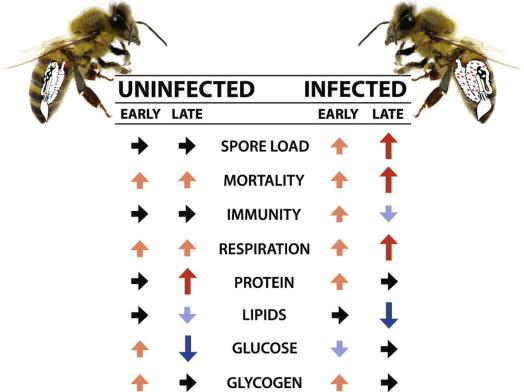A common disease of honey bees, caused by the para-site Nosema ceranae, can spread to native stingless bees via flowers. Researchers at James Cook University have shown that native stingless bees are susceptible to Nosema ceranae. Nosema ceranae is a small, unicellular parasite, common in both Asian and European honey-bees. Read more here https://beeaware.org.au/archive-pest/nosema.
“Pathogen spillover from bees kept by bee keepers to wild bee populations is increasingly considered as a pos-sible cause of wild pollinator decline,” says Terence Purkiss, student researcher at James Cook University. “Spillover has been frequently documented, but not much is known about the pathogen’s virulence in wild bees or how long pathogens can survive on a flower.”
When the scientists exposed the common Queensland stingless bees, Tetragonula hockingsi, to the pathogen, 67% became infected, and they died at three times the rate of control bees fed only sugar. In their floral trans-mission experiment, 67% of inflorescences exposed to infected honey bees yielded N. ceranae spores, and all resulted in T. hockingsi with N. ceranae spores in their guts. This means that wild bees can be infected with the disease by sharing a flower with an infected European bee. Over a six-month period, the scientists found evi-dence of the invasive pathogen at five of the six stingless bee hives they regularly monitored. They conclude that N. ceranae is virulent in T. hockingsi under laboratory conditions, is common in the local T. hockingsi population and is transmissible via flowers.
Citation: Purkiss T, Lach L. 2019 Pathogen spillover from Apis mellifera to a stingless bee. Proc. R. Soc. B 286: 20191071. http://dx.doi.org/10.1098/rspb.2019.1071

